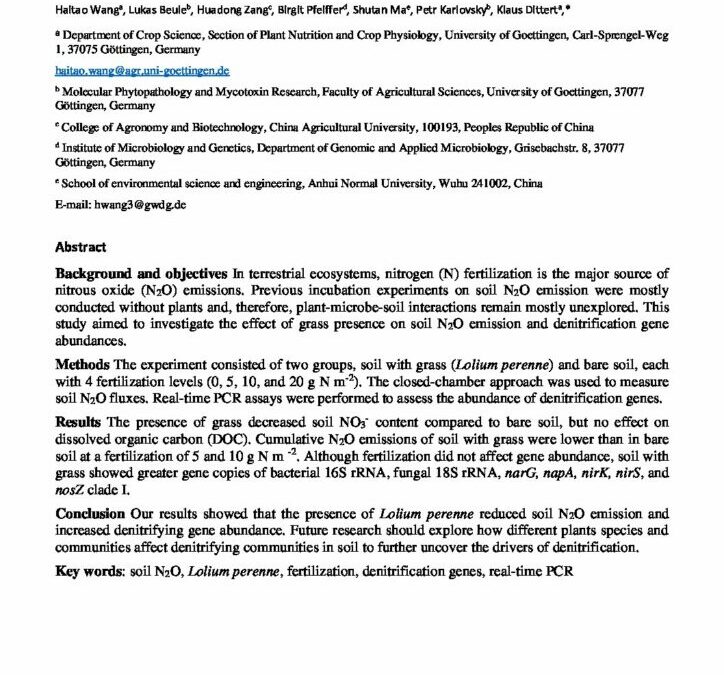Reduced soil N2O emission and enhanced denitrifier community size by growing grass versus bare soil

Background and objectives In terrestrial ecosystems, nitrogen (N) fertilization is the major source of nitrous oxide (N2O) emissions.
Previous incubation experiments on soil N2O emission were mostly conducted without plants and, therefore, plant-microbe-soil interactions remain mostly unexplored. This study aimed to investigate the effect of grass presence on soil N2O emission and denitrification gene abundances. Methods The experiment consisted of two groups, soil with grass (Lolium perenne) and bare soil, each with 4 fertilization levels (0, 5, 10, and 20 g N m-2 ). The closed-chamber approach was used to measure soil N2O fluxes. Real-time PCR assays were performed to assess the abundance of denitrification genes. Results The presence of grass decreased soil NO3 – content compared to bare soil, but no effect on dissolved organic carbon (DOC). Cumulative N2O emissions of soil with grass were lower than in bare soil at a fertilization of 5 and 10 g N m -2 . Although fertilization did not affect gene abundance, soil with grass showed greater gene copies of bacterial 16S rRNA, fungal 18S rRNA, narG, napA, nirK, nirS, and nosZ clade I.
